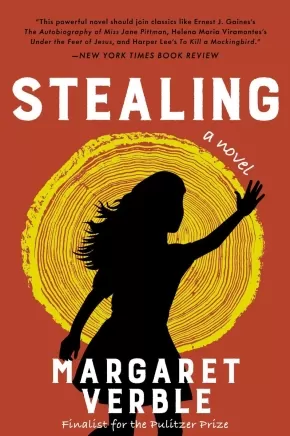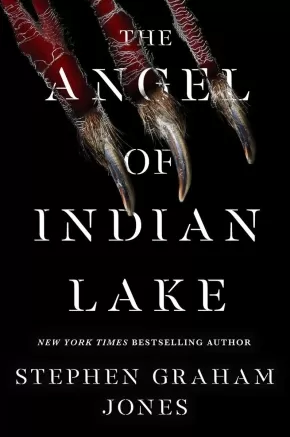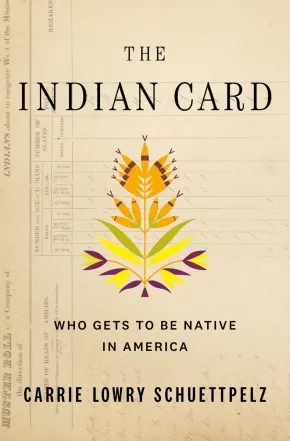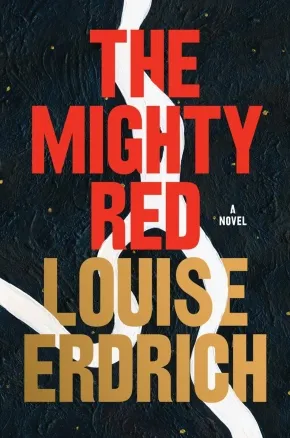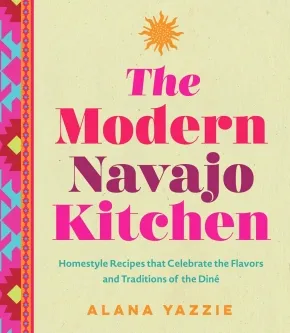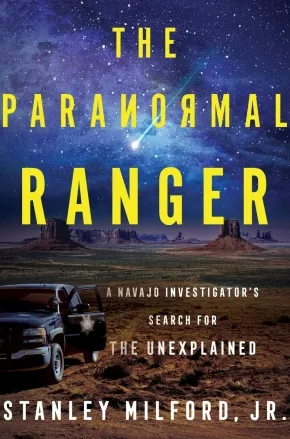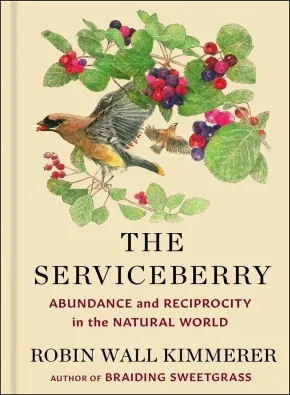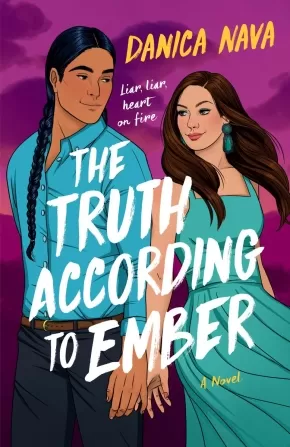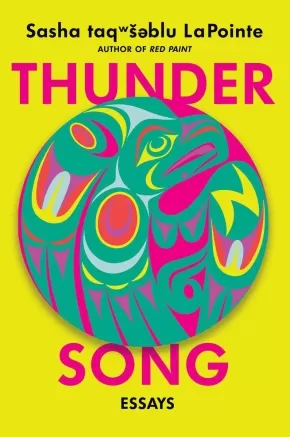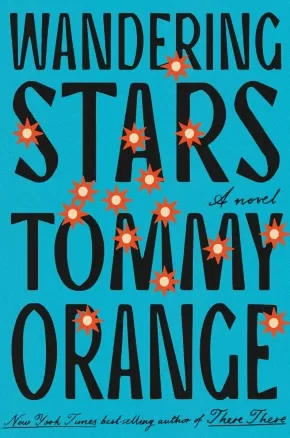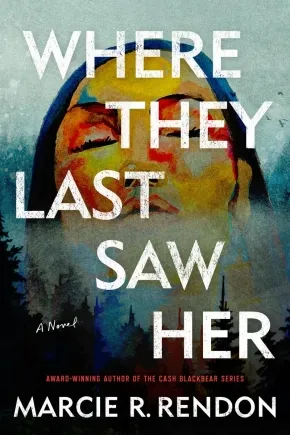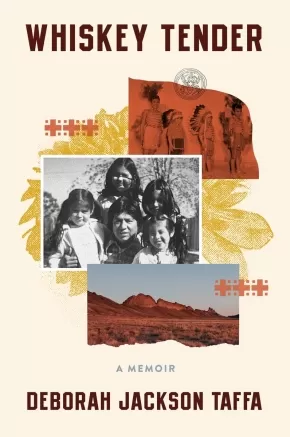
Indigenous Peoples in the United States
76
-
90
of
299 Results;
Sort By
Go To
of 20
Stealing: A Novel (PB)
$24.00
Format:
Paperback
Text Content Territories:
Indigenous American; Native American; Cherokee;
Reading Level: N/A
ISBN / Barcode: 9780063267091
Synopsis:
Synopsis:
A gripping, gut-punch of a novel about a Cherokee child removed from her family and sent to a Christian boarding school in the 1950s—an ambitious, eye-opening reckoning of history and small-town prejudices from Pulitzer Prize finalist Margaret Verble.
Since her mother’s death, Kit Crockett has lived with her grief-stricken father, spending lonely days far out in the country tending the garden, fishing in a local stream, and reading Nancy Drew mysteries from the library bookmobile. One day when Kit discovers a mysterious and beautiful woman has moved in just down the road, she is intrigued.
Kit and her new neighbor Bella become fast friends. Both outsiders, they take comfort in each other’s company. But malice lurks near their quiet bayou and Kit suddenly finds herself at the center of tragic, fatal crime. Soon, Kit is ripped from her home and Cherokee family and sent to Ashley Lordard, a religious boarding school. Along with the other Native students, Kit is stripped of her heritage, force-fed Christian indoctrination, and is sexually abused by the director. But Kit, as strong-willed and shrewd as ever, secretly keeps a journal recounting what she remembers—and revealing just what she has forgotten. Over the course of Stealing, she slowly unravels the truth of how she ended up at the school—and plots a way out.
In swift, sharp, and stunning prose, Margaret Verble spins a powerful coming-of age tale and reaffirms her place as an indelible storyteller and chronicler of history.
Reviews
"Verble tells a memorable and sobering story about injustice, hypocrisy, and resilience. Verble upholds her legacy of indelible Cherokee characters—and weaves a dynamic mystery, too.”— Kirkus Reviews
Additional Information
256 pages | 5.31" x 8" | Paperback
Swim Home to the Vanished: A Novel (PB)
$23.99
Format:
Paperback
Text Content Territories:
Indigenous American; Native American; Navajo (Diné);
ISBN / Barcode: 9780063241091
Synopsis:
Synopsis:
“Swim Home to the Vanished is a lush and fantastic journey through strange lands and minds from an incandescent new voice full of my kind of melancholic brilliance and unromantic magic.”—Tommy Orange, author of There, There
After the death of his brother, a grief-stricken young man seeks refuge and oblivion in a secluded fishing village dominated by a family of brujas in this haunting debut novel, inspired, in part, by the ramifications of Diné history and thought—a mesmerizing, original tale in the tradition of works by Toni Morrison, Haruki Murakami, and Gabriel García Márquez.
When the river swallowed Kai, Damien’s little brother didn’t die so much as vanish. As the unbearable loss settles deeper into his bones, Damien, a small-town line cook, walks away from everything he has ever known. Driving as far south as his old truck and his legs allow, he lands in a fishing village beyond the reach of his past where he hopes he can finally forget.
But the village has grief of its own. The same day that Damien arrives, a young woman from the community’s most powerful family is being laid to rest. A stranger in town, Damien is the object of gossip and suspicion, ignored by all except the dead girl’s mother, Ana Maria, who offers Damien a room and a job.
Grateful for her kindness, Damien soon begins to fall under Ana Maria's charismatic spell. But how long can he resist the rumors swirling through town suggesting she might have had something to do with her daughter’s death? Or deny his strange kinship with one of Ana Maria's surviving daughters, Marta, who knows too well the grief that follows the loss of a sibling—and who is driven by a fierce need for revenge? Swiftly, Damien finds himself caught in a power struggle between the brujas, a whirlwind battle that threatens to sweep the whole village out to sea.
Resonant with the Diné creation story and the unshakeable weight of the Long Walk—the forced removal of the Navajo from their land—Swim Home to the Vanished explores the human capacity for grief and redemption, and the lasting effects it has on the soul.
Additional Information
240 pages | 5.31" x 8.00" | Paperback
The Angel of Indian Lake
$36.99
Format:
Hardcover
Text Content Territories:
Indigenous American; Native American;
Reading Level: N/A
ISBN / Barcode: 9781668011669
Synopsis:
Synopsis:
The final installment in the most lauded trilogy in the history of horror novels picks up four years after Don’t Fear the Reaper as Jade returns to Proofrock, Idaho, to build a life after the years of sacrifice—only to find the Lake Witch is waiting for her in New York Times bestselling author Stephen Graham Jones’s finale.
It’s been four years in prison since Jade Daniels last saw her hometown of Proofrock, Idaho, the day she took the fall, protecting her friend Letha and her family from incrimination. Since then, her reputation, and the town, have changed dramatically. There’s a lot of unfinished business in Proofrock, from serial killer cultists to the rich trying to buy Western authenticity. But there’s one aspect of Proofrock no one wants to confront…until Jade comes back to town. The curse of the Lake Witch is waiting, and now is the time for the final stand.
New York Times bestselling author Stephen Graham Jones has crafted an epic horror trilogy of generational trauma from the Indigenous to the townies rooted in the mountains of Idaho. It is a story of the American west written in blood.
Series Information
This is the third book in The Indian Lake Trilogy.
Additional Information
464 pages | 5.50" x 8.37" | Hardcover
The Forgotten Frontier
$24.95
Artists:
Format:
Paperback
Text Content Territories:
Indigenous American; Native American; Apache;
Reading Level: N/A
ISBN / Barcode: 9781998779437
Synopsis:
Synopsis:
Ela Tahoe, a runaway turned deputy sheriff, is forced to contend with a Confederate invasion of her New Mexican town three months after the conclusion of the Civil War. Ela will need to confront her heritage and past with the Apache in order to get their aid to combat this Confederate threat, leading her to look at the world from the Native American perspective once again. Conceived as a tightly paced, gut wrenching western thriller, Ela fights tooth and nail to save the lives of her townspeople and most importantly, her son.
The American Western Frontier is arguably one of the most widely misrepresented histories, rife with inaccuracies and stereotypes. Black Mi'kmaq and Anishinaabe author Tristan Jones powerfully and critically reimagines and reclaims a historical retelling of the Frontier with a focus on the historically missing Indigenous narrative. Illustrated by master sequential artist Alexander Bumbulut, The Forgotten Frontier should be on everyone's reading list.
Additional Information
140 pages | 6.00" x 9.00" | Paperback
The Indian Card: Who Gets to Be Native in America
$39.99
Format:
Hardcover
Text Content Territories:
Indigenous American; Native American; Lumbee;
Reading Level: n/a
ISBN / Barcode: 9781250903167
Synopsis:
Synopsis:
A groundbreaking and deeply personal exploration of Tribal enrollment, and what it means to be Native American in the United States
Who is Indian enough?
To be Native American is to live in a world of contradictions. At the same time that the number of people in the US who claim Native identity has exploded—increasing 85 percent in just ten years—the number of people formally enrolled in Tribes has not. While the federal government recognizes Tribal sovereignty, being a member of a Tribe requires navigating blood quantum laws and rolls that the federal government created with the intention of wiping out Native people altogether. Over two million Native people are tribally enrolled, yet there are Native people who will never be. Native people who, for a variety of reasons ranging from displacement to disconnection, cannot be card-carrying members of their Tribe.
In The Indian Card, Carrie Lowry Schuettpelz grapples with these contradictions. Through in-depth interviews, she shares the stories of people caught in the mire of identity-formation, trying to define themselves outside of bureaucratic processes. With archival research, she pieces together the history of blood quantum and tribal rolls and federal government intrusion on Native identity-making. Reckoning with her own identity—the story of her enrollment and the enrollment of her children—she investigates the cultural, racial, and political dynamics of today’s Tribal identity policing. With this intimate perspective of the ongoing fight for Native sovereignty, The Indian Card sheds light on what it looks like to find a deeper sense of belonging.
Reviews
“The Indian Card is a candid, unflinching look at the sometimes subtle, sometimes ruthless ways federal policies undermine Indigenous culture and society. Carrie Schuettpelz understands first-hand how official tribal membership rations not only access to benefits such as healthcare and housing stipends, but also an ineffable sense of belonging. Her thorough excavation of the painful history that gave rise to rigid enrollment policies is a courageous gift to our understanding of contemporary Native life.”– The Whiting Foundation Jury's Note
"The Indian Card is all at once an intimate portrait, a sweeping history and a thoughtful examination of tribal identity, Native sovereignty and the quest for belonging."—WBUR
"Carrie’s book is so dang good you need to get two copies: one for you and then the other for a friend. Schuettpelz, with so much research and interviews, shares the stories of people caught in the mire of identity-formation with such ease. The voice is pitch perfect, there is not one wrong word and the content is written with so much grace and elegance and honesty you can’t help but finish Schuettpelz’s work knowing it will live on for as long as it takes to unravel the many, many contradictions surrounding what it means to Native American today." - Morgan Talty, author of Fire Exit
"A well researched book for readers who are curious or confused about complex kinship relationships in Native America. Armed with personal experience, interviews, and scholarly data, Carrie Lowry Schuettpelz tackles the political nature of Indigenous identity with clarity and concision."—Deborah Taffa, author of Whiskey Tender
"Illuminating...An innovative exploration of a thorny issue." —Publishers Weekly, starred review
"A clear and frank analysis of the challenges that define Native selfhood." —Kirkus Reviews
Additional Information
304 pages | 6.12" x 9.25" | includes 10-12 charts/figures and captions throughout | Hardcover
The Mighty Red: A Novel
$25.99
Format:
Paperback
Text Content Territories:
Indigenous American;
Reading Level: N/A
ISBN / Barcode: 9780063419353
Synopsis:
Synopsis:
In this stunning novel, Pulitzer Prize and National Book Award–winning author Louise Erdrich tells a story of love, natural forces, spiritual yearnings, and the tragic impact of uncontrollable circumstances on ordinary people’s lives.
History is a flood. The mighty red . . .
In Argus, North Dakota, a collection of people revolve around a fraught wedding.
Gary Geist, a terrified young man set to inherit two farms, is desperate to marry Kismet Poe, an impulsive, lapsed Goth who can't read her future but seems to resolve his.
Hugo, a gentle red-haired, home-schooled giant, is also in love with Kismet. He’s determined to steal her and is eager to be a home wrecker.
Kismet's mother, Crystal, hauls sugar beets for Gary's family, and on her nightly runs, tunes into the darkness of late-night radio, sees visions of guardian angels, and worries for the future, her daughter’s and her own.
Human time, deep time, Red River time, the half-life of herbicides and pesticides, and the elegance of time represented in fracking core samples from unimaginable depths, is set against the speed of climate change, the depletion of natural resources, and the sudden economic meltdown of 2008-2009. How much does a dress cost? A used car? A package of cinnamon rolls? Can you see the shape of your soul in the everchanging clouds? Your personal salvation in the giant expanse of sky? These are the questions the people of the Red River Valley of the North wrestle with every day.
The Mighty Red is a novel of tender humor, disturbance, and hallucinatory mourning. It is about on-the-job pains and immeasurable satisfactions, a turbulent landscape, and eating the native weeds growing in your backyard. It is about ordinary people who dream, grow up, fall in love, struggle, endure tragedy, carry bitter secrets; men and women both complicated and contradictory, flawed and decent, lonely and hopeful. It is about a starkly beautiful prairie community whose members must cope with devastating consequences as powerful forces upend them. As with every book this great modern master writes, The Mighty Red is about our tattered bond with the earth, and about love in all of its absurdity and splendor.
A new novel by Louise Erdrich is a major literary event; gorgeous and heartrending, The Mighty Red is a triumph.
Reviews
"A love triangle is at the heart of this novel, set against the backdrop of a beet farm in North Dakota during the economic meltdown of 2008-2009. It's as much about the financial crash and environmental destruction as it is about the people most impacted by and vulnerable to these devastations." — New York Times
"While the novel touches on tragedy, it also includes scenes of sheer comedic delight. No one describes a book-group meeting better than Erdrich. Pulitzer Price and National Book Award winner Erdrich (The Sentence) yet again displays her storytelling skills." — Library Journal (starred review)
"[A] finely woven tale of anguish and desire, crimes and healing. With irresistible characters, dramatic predicaments, crisp wit, gorgeously rendered settings, striking ecological facts, and a cosmic dimension, Erdrich’s latest tale of the plains reverberates with arresting revelations." — Booklist
Educator Information
The Mighty Red is a standalone novel, but it's also a sequel to Louise's 1986 novel The Beet Queen. It takes place in Argus, North Dakota, the same fictional town where many of her other novels are set.
Additional Information
384 pages | 6.00" x 9.00" | Paperback
The Modern Navajo Kitchen: Homestyle Recipes that Celebrate the Flavors and Traditions of the Diné
$32.99
Format:
Hardcover
Text Content Territories:
Indigenous American; Native American; Navajo (Diné);
Reading Level: N/A
ISBN / Barcode: 9781577154679
Synopsis:
Synopsis:
Nourish your body and mind through food with these 60 recipes celebrating Navajo culinary traditions.
The Modern Navajo Kitchen takes you on an exhilarating journey for your taste buds. This beautifully photographed cookbook ties together traditional Navajo recipes as well as global recipes with a Navajo spin, creating a truly unique culinary experience! Choose from a plethora of drinks, breads, breakfasts, soups, mains, sides, and desserts—the sky’s the limit.
Incorporating traditional and modern ingredients, some of the deliciously nourishing and comforting recipes include:
- Navajo Boba Milk Tea (Abe’ Boba Dééhk’azí)
- Fry Bread (Dah Díníilghaazh)
- Navajo Burgers (Atsį’ Yik’ą́ Náneeskadí Bił Ałch’į’ Át’éhí)
- Sumac and Strawberry Greek Yogurt Ice Pops (Chiiłchin Yogurt Tiní)
- and more!
This comprehensive cookbook also includes instructions for how to make such things as juniper ash, roasted cornmeal, and roasted chiles that will bring your Navajo cooking skills to the next level. A short history of Navajo culinary traditions is provided to provide cultural context behind your new culinary experiences, and sample meal plans will help you put together the perfect menus for the week ahead or for those special occasions with family and friends.
Reconnect to your cultural heritage or treat your palate (or both!) with The Modern Navajo Kitchen.
Additional Information
192 pages | 8.00" x 9.50" | Colour Photos | Hardcover
The Paranormal Ranger: A Navajo Investigator's Search for the Unexplained (HC) (5 in Stock)
$35.99
Format:
Hardcover
Text Content Territories:
Indigenous American; Native American; Cherokee; Navajo (Diné);
Reading Level: N/A
ISBN / Barcode: 9780063371057
Synopsis:
Synopsis:
A Navajo Ranger’s chilling and clear-eyed memoir of his investigations into bizarre cases of the paranormal and unexplained in Navajoland
As a Native American with parents of both Navajo and Cherokee descent, Stanley Milford Jr. grew up in a world where the supernatural was both expected and taboo, where shapeshifters roamed, witchcraft was a thing to be feared, and children were taught not to whistle at night.
In his youth, Milford never went looking for the paranormal, but it always seemed to find him. When he joined the fabled Navajo Rangers—a law enforcement branch of the Navajo Nation who are equal parts police officers, archeological conservationists, and historians—the paranormal became part of his job. Alongside addressing the mundane duties of overseeing the massive 27,000-square-mile reservation, Milford was assigned to utterly bizarre and shockingly frequent cases involving mysterious livestock mutilations, skinwalker and Bigfoot sightings, UFOs, and malicious hauntings.
In The Paranormal Ranger, Milford recounts the stories of these cases from the clinical and deductive perspective of a law enforcement officer. Milford’s Native American worldview and investigative training collide to provide an eerie account of what logic dictates should not be possible.
Reviews
“Stanley Milford Jr. masterfully intertwines memoir, Diné creation stories, and true encounters with otherworldly phenomena. As a Navajo Ranger, Milford’s path is shadowed by eerie cryptids, mysterious UFOs, and the ever-present trials of his demanding role. His unwavering dedication, bravery, and deep cultural insight transform this narrative into a mesmerizing journey. Bridging the realms of legend and reality, each spine-chilling investigation illuminates the enduring spirit and wisdom of the Navajo people, offering readers a profound and unforgettable cultural experience.”— Shane Hawk, co-editor of Never Whistle at Night: An Indigenous Dark Fiction Anthology
“Stan’s life story is a true testament to the reverence that Native American culture has for the paranormal. His passion for investigating the otherworldly really shines. A fascinating read, and highly recommended!” — Steve Gonsalves, star of Ghost Hunters and bestselling author of A Life with Ghosts
“Many of Stan’s experiences recounted in this book parallel what we’ve seen on Skinwalker Ranch, with an eerie degree of similarity. Getting to learn more about Stan’s life and his Navajo-Cherokee heritage alongside these incredible stories is a meaningful bonus.” — Jim Morse, ranch manager and cast member of The Secret of Skinwalker Ranch
"Milford interweaves colorful stories from Navajo mythology that illuminate cultural beliefs about the origins of life, monsters, and the spirit world. . . . Engaging reading for adventurous minds." — Kirkus Reviews
"Equal parts memoir and supernatural record, Milford's book shares how these occurrences enlightened him. He leaves the reader with a unified theory of how paranormal phenomena are connected and what this means for us as human beings. And he demonstrates how experience and open-mindedness can, over a lifetime, build up to unparalleled expertise." — Booklist
Additional Information
256 pages | 6.00" x 9.00" | Hardcover
The Serviceberry: Abundance and Reciprocity in the Natural World
$25.00
Format:
Hardcover
Text Content Territories:
Indigenous American;
ISBN / Barcode: 9781668072240
Synopsis:
Synopsis:
From the #1 New York Times bestselling author of Braiding Sweetgrass, a bold and inspiring vision for how to orient our lives around gratitude, reciprocity, and community, based on the lessons of the natural world.
As Indigenous scientist and author of Braiding Sweetgrass Robin Wall Kimmerer harvests serviceberries alongside the birds, she considers the ethic of reciprocity that lies at the heart of the gift economy. How, she asks, can we learn from Indigenous wisdom and the plant world to reimagine what we value most? Our economy is rooted in scarcity, competition, and the hoarding of resources, and we have surrendered our values to a system that actively harms what we love. Meanwhile, the serviceberry’s relationship with the natural world is an embodiment of reciprocity, interconnectedness, and gratitude. The tree distributes its wealth—its abundance of sweet, juicy berries—to meet the needs of its natural community. And this distribution insures its own survival. As Kimmerer explains, “Serviceberries show us another model, one based upon reciprocity, where wealth comes from the quality of your relationships, not from the illusion of self-sufficiency.”
As Elizabeth Gilbert writes, Robin Wall Kimmerer is “a great teacher, and her words are a hymn of love to the world.” The Serviceberry is an antidote to the broken relationships and misguided goals of our times, and a reminder that “hoarding won’t save us, all flourishing is mutual.”
Reviews
“Robin Wall Kimmerer is writer of rare grace. She writes about the natural world from a place of such abundant passion that one can never quite see the world the same way after having seen it through Kimmerer’s eyes. In Braiding Sweetgrass, she takes us on a journey that is every bit as mythic as it is scientific, as sacred as it is historical, as clever as it is wise. She is a great teacher, and her words are a hymn of love to the world.” —Elizabeth Gilbert
“Robin Wall Kimmerer has written an extraordinary book, showing how the factual, objective approach of science can be enriched by the ancient knowledge of the indigenous people. It is the way she captures beauty that I love the most—the images of giant cedars and wild strawberries, a forest in the rain and a meadow of fragrant sweetgrass will stay with you long after you read the last page.” —Jane Goodall
“I give daily thanks for Robin Wall Kimmerer for being a font of endless knowledge, both mental and spiritual.”—Richard Powers, The New York Times
“Robin Wall Kimmerer opens a sense of wonder and humility for the intelligence in all kinds of life we are used to naming and imagining as inanimate.” —Krista Tippett, host of On Being
Additional Information
112 pages | 5.00" x 7.00" | Hardcover
The Seventh Direction Teacher Lesson Plan
$7.99
Artists:
Text Content Territories:
Indigenous American; Native American; Sioux; Lakota; Indigenous Canadian; First Nations; Sioux; Lakota;
ISBN / Barcode: 9781778540325
Synopsis:
Synopsis:
A teacher lesson plan that accompanies the book, The Seventh Direction. Includes comprehension questions, group activities, colouring pages, and more. In this enlightening legend shared by Lakota Elder Kevin Locke, Wakhan Thanka (The Great Spirit) created the entire world in seven days; leaving the most precious creation for last. In order to protect this precious creation, Wakhan Thanka needed to hide it where it would always be safe and turned to our animal relatives for help. Together, they found the perfect place. Do you know where they chose?
Educator Information
This lesson plan accompanies the book The Seventh Direction: A Legend of Creation.
This lesson plan is available in French: La septième direction Plan de cours
Additional Information
12 pages | 8.75" x 11.00" | Paper Packet
The Truth According to Ember
$25.99
Format:
Paperback
Text Content Territories:
Indigenous American; Native American; Chickasaw;
Reading Level: N/A
ISBN / Barcode: 9780593642603
Synopsis:
Synopsis:
A Chickasaw woman who can’t catch a break serves up a little white lie that snowballs into much more in this witty and irresistible rom-com by debut author Danica Nava.
Ember Lee Cardinal has not always been a liar—well, not for anything that counted at least. But her job search is not going well and when her resumé is rejected for the thirty-seventh time, she takes matters into her own hands. She gets “creative” listing her qualifications and answers the ethnicity question on applications with a lie—a half-lie, technically. No one wanted Native American Ember, but white Ember has just landed her dream accounting job on Park Avenue (Oklahoma City, that is).
Accountant Ember thrives in corporate life—and her love life seems to be looking up too: Danuwoa Colson, the IT guy and fellow Native who caught her eye on her first day, seems to actually be interested in her too. Despite her unease over the no-dating policy at work, they start to see each other secretly, which somehow makes it even hotter? But when they're caught in a compromising position on a work trip, a scheming colleague blackmails Ember, threatening to expose their relationship. As the manipulation continues to grow, so do Ember’s lies. She must make the hard decision to either stay silent or finally tell the truth, which could cost her everything.
Reviews
“The Truth According to Ember is a truly funny and wonderfully heartfelt comedy of errors with a plucky, lovable heroine I rooted for from page one. Danica Nava is a fresh, exciting new voice in the world of romantic comedies and I can’t wait to see what she does next.”—Emily Henry, #1 New York Times bestselling author of Happy Place
"My heart was in my stomach as I watched Ember weave herself a tangled web and have to figure her way out. Danica Nava's The Truth According to Ember gives us a fresh, relatable heroine in Ember, who has been so focused on helping everyone else that she doesn't always know how to ask for help herself. And Danuwoa! No wonder Ember blushes every time the swoony IT technician tells her to unplug it and plug it back in. This book provided the perfect escape mixed with the perfect amount of grounded reality, bringing the characters to life."—Alicia Thompson, USA Today bestselling author of With Love, from Cold World
"Danica Nava has created a fantastic heroine in Ember Lee Cardinal, whose good heart and determination to do the right thing are as admirable as her occasional lies are understandable...Nava guides Ember along a compelling journey of empowerment while tackling complicated issues of identity, racism, corporate corruption, and the pain and joy that family can bring. And the book is so funny, too! The characters shine, each of them unique and interesting and so real they could step off the page. The Truth According to Ember was a delight from start to finish, and Nava delves into both heartbreaking and life-affirming topics with wit and wisdom. Danica Nava's writing is fresh, funny, and romantic, and I will read anything she writes."—Sarah Hawley, author of A Werewolf's Guide to Seducing a Vampire
“Fresh, funny, and full of heart, The Truth According to Ember delivers a romantic comedy delight. Ember is lovable and laugh-out-loud hilarious, and her journey as she learns to lean into the support of her community, discovers unconditional love, and embraces the power of telling her truth, is wonderfully touching. This is a romance I won’t soon forget.”—Chloe Liese, USA Today bestselling author of Always Only You
Additional Information
384 pages | 5.18" x 8.00" | Paperback
Thunder Song: Essays (HC) (3 in Stock)
$35.00
Format:
Hardcover
Text Content Territories:
Indigenous American; Native American; Salish; Coast Salish; Nooksack; Upper Skagit;
Reading Level: N/A
ISBN / Barcode: 9781640096356
Synopsis:
Synopsis:
The author of the award-winning memoir Red Paint returns with a razor-sharp, clear-eyed collection of essays on what it means to be a proudly queer indigenous woman in the United States today
Drawing on a rich family archive as well as the anthropological work of her late great-grandmother, Sasha taqʷšəblu LaPointe explores themes ranging from indigenous identity and stereotypes to cultural displacement and environmental degradation to understand what our experiences teach us about the power of community, commitment, and conscientious honesty.
Unapologetically punk, the essays in Thunder Song segue from the miraculous to the mundane, from the spiritual to the physical, as they examine the role of art—in particular music—and community in helping a new generation of indigenous people claim the strength of their heritage while defining their own path in the contemporary world.
Reviews
"Blending beautiful family history with her own personal memories, LaPointe’s writing is a ballad against amnesia, and a call to action for healing, for decolonization, for hope." —Lauren Puckett-Pope, Elle
“It’s a provocative and wonderfully crafted collection exploring cultural legacies, colonialism, and finding your own path forward.” —Susie Dumond, BookRiot
"Lyrical prose elevates LaPointe’s incisive and heartfelt personal reflections. The result is a beautifully rendered snapshot of contemporary American Indigenous life." —Publishers Weekly
"These passionate essays, adamant in their activist pleas, reflect hard-won wisdom, as well as the representative significance of the author’s experiences. Probing and poignant reflections on Indigenous America." —Kirkus Reviews
“Sasha taqʷšəblu LaPointe’s essays in Thunder Song are loud, bold, and startlingly majestic. None of Sasha’s examinations fail to find truth: page after page, the intersections of family, heritage, history, and music build to countless transcendental moments for the reader, which is not only the magic of this book but a clear testament to Sasha’s immense storytelling power. She is a major talent. Thunder Song is masterful and wise, and it will not be forgotten.” ––Morgan Talty, National Bestselling author of Night of the Living Rez
Additional Information
256 pages | 5.36" x 8.30" | Hardcover
Wandering Stars: A Novel (HC) (2 in Stock)
$35.00
Format:
Hardcover
Text Content Territories:
Indigenous American; Native American; Arapaho; Cheyenne;
Reading Level: N/A
ISBN / Barcode: 9780771050367
Synopsis:
Synopsis:
The eagerly awaited follow-up to Pulitzer Prize finalist Tommy Orange’s breakout best seller There There—winner of the PEN/Hemingway Award, the John Leonard Prize, the American Book Award, and one of the New York Times Ten Best Books of the Year—Wandering Stars traces the legacies of the Sand Creek Massacre of 1864 and the Carlisle Industrial School for Indians through to the shattering aftermath of Orvil Redfeather’s shooting in There There.
Colorado, 1864. Star, a young survivor of the Sand Creek Massacre, is brought to the Fort Marion Prison Castle, where he is forced to learn English and practice Christianity by Richard Henry Pratt, an evangelical prison guard who will go on to found the Carlisle Industrial School for Indians, an institution dedicated to the eradication of Native history, culture, and identity. A generation later, Star’s son, Charles, is sent to the school, where he is brutalized by the man who was once his father’s jailer. Under Pratt’s harsh treatment, Charles clings to moments he shares with a young fellow student, Opal Viola, as the two envision a future away from the institutional violence that follows their bloodline.
Oakland, 2018. Opal Viola Victoria Bear Shield is barely holding her family together after the shooting that nearly took the life of her nephew Orvil. From the moment he awakens in his hospital bed, Orvil begins compulsively googling school shootings on YouTube. He also becomes emotionally reliant on the prescription medications meant to ease his physical trauma. His younger brother Lony, suffering from PTSD, is struggling to make sense of the carnage he witnessed at the shooting by secretly cutting himself and enacting blood rituals which he hopes will connect him to his Cheyenne heritage. Opal is equally adrift, experimenting with Ceremony and peyote, searching for a way to heal her wounded family.
Extending his constellation of narratives into the past and future, Tommy Orange once again delivers a story that is by turns shattering and wondrous, a book piercing in its poetry, sorrow, and rage—a masterful follow-up to his already—classic first novel, and a devastating indictment of America’s war on its own people.
Additional Information
336 pages | 5.50" x 8.25" | Hardcover
Where They Last Saw Her: A Novel
$24.95
Format:
Paperback
Text Content Territories:
Indigenous American; Native American;
Reading Level: N/A
ISBN / Barcode: 9780593974872
Synopsis:
Synopsis:
From the award-winning author of the Cash Blackbear series comes a compelling novel of a Native American woman who learns of the disappearance of one of her own and decides enough is enough.
All they heard was her scream.
Quill has lived on the Red Pine reservation in Minnesota her whole life. She knows what happens to women who look like her. Just a girl when Jimmy Sky jumped off the railway bridge and she ran for help, Quill realizes now that she’s never stopped running. As she trains for the Boston Marathon early one morning in the woods, she hears a scream. When she returns to search the area, all she finds are tire tracks and a single beaded earring.
Things are different now for Quill than when she was a lonely girl. Her friends Punk and Gaylyn are two women who don’t know what it means to quit; her loving husband, Crow, and their two beautiful children challenge her to be better every day. So when she hears a second woman has been stolen, she is determined to do something about it—starting with investigating the group of men working the pipeline construction just north of their homes.
As Quill closes in on the truth about the missing women, someone else disappears. In her quest to find justice for all of the women of the reservation, she is confronted with the hard truths of their home and the people who purport to serve them. When will she stop losing neighbors, friends, family? As Quill puts everything on the line to make a difference, the novel asks searing questions about bystander culture, the reverberations of even one act of crime, and the long-lasting trauma of being considered invisible.
Reviews
“Rendon’s book will break your heart, but it will also inspire and inform.”—Kirkus Review
“Rendon masterfully navigates the histories of trauma and brutality that continue to exist within our Native communities, laying bare the truths of colonial violence and the continuing need for closure and justice in our homelands.”—Ramona Emerson, author of Shutter
“An expert and uncompromising storyteller, Marcie Rendon aims her extraordinary powers on a no-holds barred story that will devastate and enrage you—and renew your belief in the power of community and the strength in women’s hearts. Where They Last Saw Her is unmissable.”—Katie Gutierrez, bestselling author of More Than You’ll Ever Know
Additional Information
336 Pages | 5.5" x 8.25" | Paperback
Whiskey Tender: A Memoir (HC) (3 in Stock)
$37.00
Format:
Hardcover
Text Content Territories:
Indigenous American; Native American; Laguna Pueblo; Quechan (Yuma) Nation;
Reading Level: N/A
ISBN / Barcode: 9780063288515
Synopsis:
Synopsis:
Reminiscent of the works of Mary Karr and Terese Marie Mailhot, a memoir of family and survival, coming-of-age on and off the reservation, and of the frictions between mainstream American culture and Native inheritance; assimilation and reverence for tradition.
Deborah Jackson Taffa was raised to believe that some sacrifices were necessary to achieve a better life. Her grandparents—citizens of the Quechan Nation and Laguna Pueblo tribe—were sent to Indian boarding schools run by white missionaries, while her parents were encouraged to take part in governmental job training off the reservation. Assimilation meant relocation, but as Taffa matured into adulthood, she began to question the promise handed down by her elders and by American society: that if she gave up her culture, her land, and her traditions, she would not only be accepted, but would be able to achieve the “American Dream.”
Whiskey Tender traces how a mixed tribe native girl—born on the California Yuma reservation and raised in Navajo territory in New Mexico—comes to her own interpretation of identity, despite her parent’s desires for her to transcend the class and “Indian” status of her birth through education, and despite the Quechan tribe’s particular traditions and beliefs regarding oral and recorded histories. Taffa’s childhood memories unspool into meditations on tribal identity, the rampant criminalization of Native men, governmental assimilation policies, the Red Power movement, and the negotiation between belonging and resisting systemic oppression. Pan-Indian, as well as specific tribal histories and myths, blend with stories of a 1970s and 1980s childhood spent on and off the reservation.
Taffa offers a sharp and thought-provoking historical analysis laced with humor and heart. As she reflects on her past and present—the promise of assimilation and the many betrayals her family has suffered, both personal and historical; trauma passed down through generations—she reminds us of how the cultural narratives of her ancestors have been excluded from the central mythologies and structures of the “melting pot” of America, revealing all that is sacrificed for the promise of acceptance.
Reviews
“We have more Native stories now, but we have not heard one like this. Whiskey Tender is unexpected and propulsive, indeed tender, but also bold, and beautifully told, like a drink you didn’t know you were thirsty for. This book, never anything less than mesmerizing, is full of family stories and vital Native history. It pulses and it aches, and it lifts, consistently. It threads together so much truth by the time we are done, what has been woven together equals a kind of completeness from brokenness, and a hope from knowing love and loss and love again by naming it so.” — Tommy Orange, National Bestselling Author of There There
"What makes Taffa’s version exceptional is her visceral prose and sharp attunement to the tragedies of assimilation. This is a must-read."— Publishers Weekly (starred review)
"A warm and propulsive personal history that lucidly traces its Native and colonial legacies to draw a complex and humane portrait of a family and a pivotal political time in U.S. history. Taffa is a gifted raconteur and her memoir should be required reading for everyone in this country." — Melissa Febos, author of Body Work and Girlhood, winner of the National Book Critics Circle Award
Additional Information
304 pages | 6.00" x 9.00" | 6 Photographs | Hardcover
Sort By
Go To
of 20

